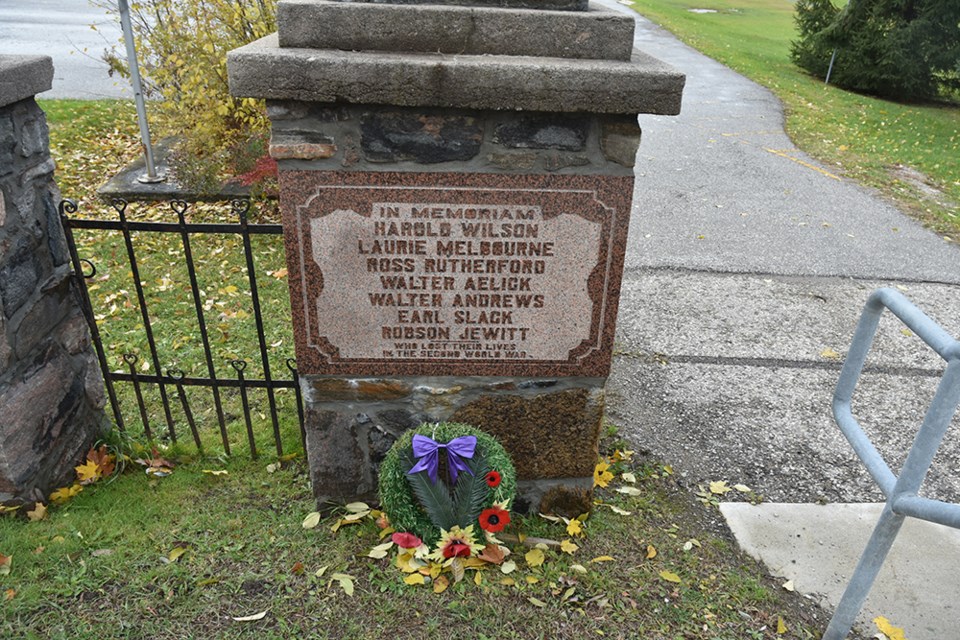Volunteers from Cookstown, Bond Head, Beeton and Bradford helped to suppress the Northwest Rebellion of Louis Riel in 1885 — and when the First World War broke out in 1914, local men rushed to enlist. In 1917, an estimated 5,000 troops training at Base Borden undertook a two-week march to Toronto — from Borden to Cookstown, then south on 27 to Bond Head, and across to Bradford before heading south on Yonge Street.
It wasn’t just men who served in the First World War. Myra Wood, nursing sister, was born in West Gwillimbury. She graduated in nursing in 1916, and then served overseas, in Greece, England and Malta. She received three medals for her dedication and bravery. Wood survived and returned home after the war. She died in 1959. Women served in other ways: in 1917, the Bond Head Soldiers Aid Society sent 108 boxes filled with home baking, socks, shirts and pajamas to the troops.
On the Bradford roll of honour, for giving their lives in the Great War of 1914-1918: John Adams, Henry Aishford, Matthew Archer, Elwood Belfry, George Belfry, James Cassels, Gordon Cerswell, Ernest Cousins, Wm. Dale, Fred Edwards, Frank Eldridge, Wm. Eldridge, Dalton Gosnell, John Kidd, Arthur Long, John Milligan, Fred Mooney, Wallace McCann, James McDonald, George McKinstry, Earle Neilly, Wesley Neilly, Arthur Porter, Henry Smith, Wm. Spence, Edgar Stevens, Armiger Stevenson, Ralph Stevenson, Jack Sutherland, Bert Wood, Wm. Wood, Alonzo Wilson, Fred Wilke. A memorial in Bond Head lists Sgt. James Edward Cassells, Robert Everett Carter, Leonard Averill and William Wood, as men who “fell in the Great War.” Many are commemorated in street names in Bradford and Bond Head.
When the Second World War broke out in 1939, more than 227 men and women of West Gwillimbury stepped forward to enlist. The war effort went beyond signing up: advertisements in the Bradford Witness exhorted residents to do their part by collecting waste paper, rags and metal, and raising funds for the troops and for the victims of bombing raids overseas. In 1941, the Fennell’s Corners community held a benefit euchre event and dance for the British War Victims Fund, attracting more than 300 people and raising about $260. In October 1943, the local Canadian Corps Association held a bingo, auction and dance at the old town hall in Bradford. The auction included Holland Marsh potatoes, carrots, cabbages and beets, as well as chickens, eggs, and a live goose, duck and rooster. In all about $310 was raised.
The Bradford cenotaph originally stood on Holland Street East in front of the old town hall — a stone monument, with bronze plaque, topped by three rifles. In the 1950s, the cenotaph was demolished to make room for a fire hall. The three bronze rifles vanished — their whereabouts unknown. The new cenotaph stands in front of the Bradford legion at 115 Back St.
From Governor Simcoe Slept Here: The Legacy of West Gwillimbury, Bradford West Gwillimbury Public Library Archives, and other online sources.
Do you have a little-known fact about BWG’s history? Email the details to [email protected].

